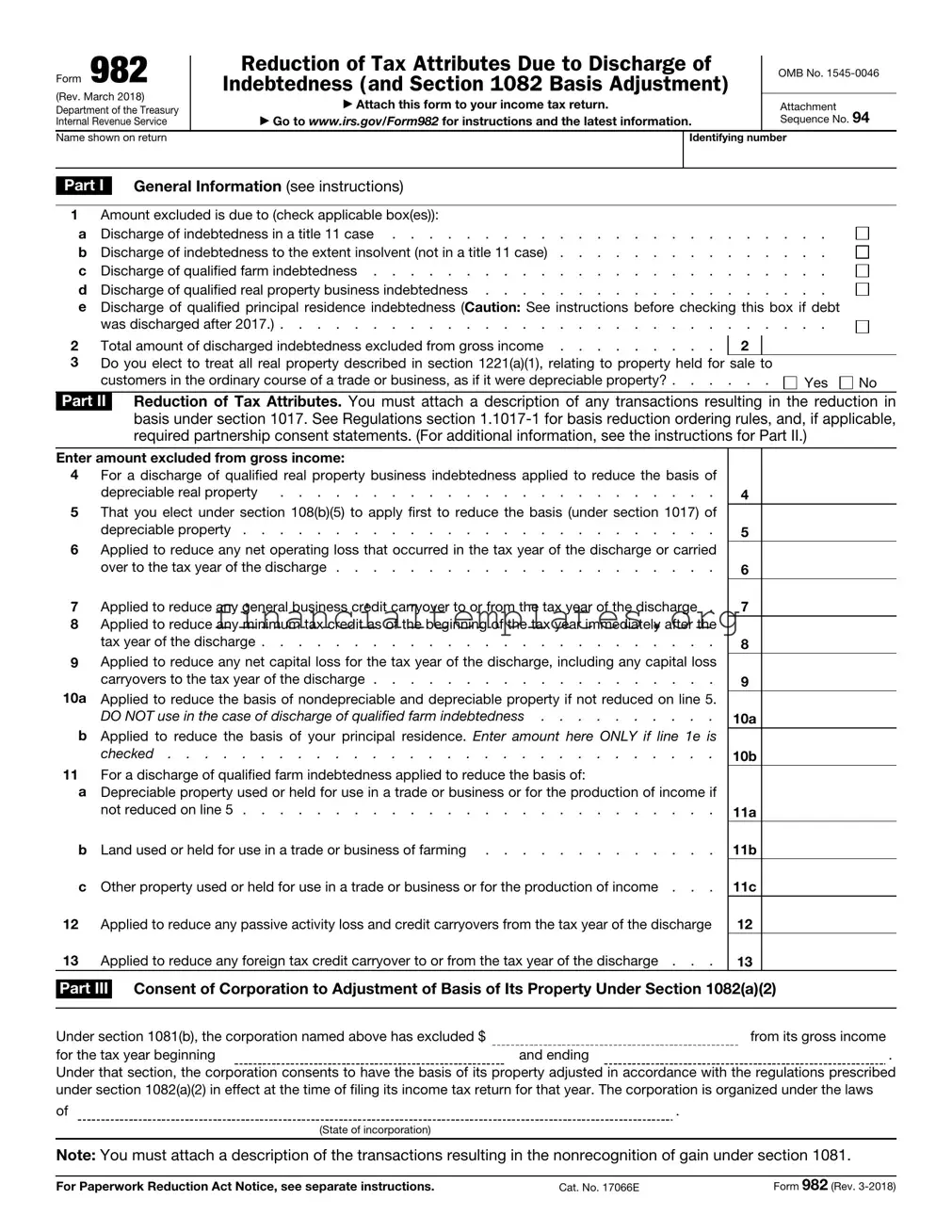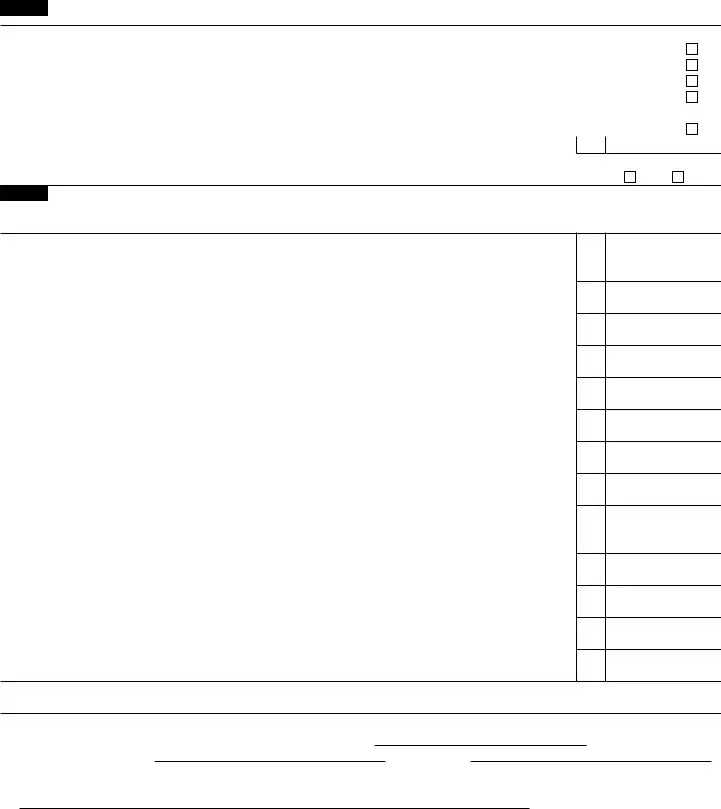The Form 433-A (OIC) or Collection Information Statement for Wage Earners and Self-Employed Individuals is quite similar to the IRS Insolvency form. Both documents require detailed financial information from the taxpayer to assess their financial situation. While Form 982 is used to determine the reduction of tax attributes due to discharge of indebtedness, Form 433-A (OIC) collects financial details to propose an offer in compromise to settle tax debts for less than the full amount owed. Each form, in its way, aids in evaluating a person's ability to satisfy their tax liabilities.
Form 433-F, Collection Information Statement, like the IRS Insolvency form, gathers extensive information about an individual's finances. This similarity lies in their use of financial data to evaluate a taxpayer's fiscal health and capacity. Where Form 982 is focused on identifying insolvency and adjusting tax attributes accordingly, Form 433-F is broader, used by the IRS to determine how an individual can fulfill outstanding tax obligations, possibly leading to payment plans or settlements.
Another document, the Schedule D (Form 1040), Capital Gains and Losses, shares a connection with the Insolvency form through its focus on adjustments to financial standings. While the Insolvency form addresses the overall adjustment of tax attributes post-discharge of debt, Schedule D involves calculating capital gains or losses which can affect taxable income. Both forms contribute to adjusting an individual's tax liabilities based on changes in their financial situation.
The Bankruptcy Forms, notably the schedules of assets and liabilities used in such proceedings, have similar objectives to the IRS Insolvency form regarding the disclosure of financial position. These bankruptcy documents, while part of the judicial process to address debt relief, similarly require detailed listings of an individual's financial standing. The Insolvency form's role in determining the tax implications of discharged indebtedness mirrors the bankruptcy process's goal of resolving insolvency.
The Form 1099-C, Cancellation of Debt, closely relates to the IRS Insolvency form as it involves identifying situations where a taxpayer may have realized income due to the cancellation of debt. Just as Form 982 can lead to the exclusion of such discharged debt from gross income for tax purposes, Form 1099-C alerts the taxpayer and the IRS to the occurrence of debt cancellation, requiring assessment of its impact on tax obligations.
Form 6252, Installment Sale Income, while serving a different primary purpose—reporting income from sales made over time—shares the concept of adjusting financial outcomes over periods, similar to what the IRS Insolvency form accomplishes for discharged indebtedness. Both involve recognizing changes to income across timeframes, affecting tax calculations and liabilities.
The Adjustment of Shareholders' Equity Statements found in corporate accounting and tax filings relates to the motive behind the IRS Insolvency form. Both documents are concerned with adjusting financial and tax attributes based on events impacting the taxpayer's economic status. While the Adjustment of Shareholders' Equity focuses on corporate entities, the principle of adjusting financial records for significant events is a common goal.
Form 1041, U.S. Income Tax Return for Estates and Trusts, is akin to Form 982 in its adjustment of tax attributes due to unique circumstances affecting financial status. Form 982's focus is on insolvency’s impact on an individual, Form 1041 involves tax considerations for estates and trusts, which may include addressing debts and distributions that can change the entity’s tax attributes.
The Statement of Financial Affairs in bankruptcy proceedings is another document with objectives parallel to those of the IRS Insolvency form. This statement provides a comprehensive look at the debtor's financial history and current status, analogous to how Form 982 assesses the taxpayer's financial situation to adjust tax attributes based on insolvency.
The Home Affordable Modification Program (HAMP) application forms, designed to assist homeowners in restructuring mortgages to avoid foreclosure, share an end goal with the IRS Insolvency form: relief in financial hardship situations. Where Form 982 provides tax relief through the reduction of tax attributes following debt discharge, HAMP sought to alleviate burdens by modifying loan terms, both aiming to aid individuals facing fiscal stress.

